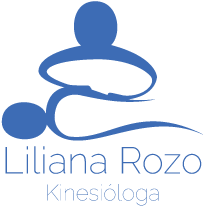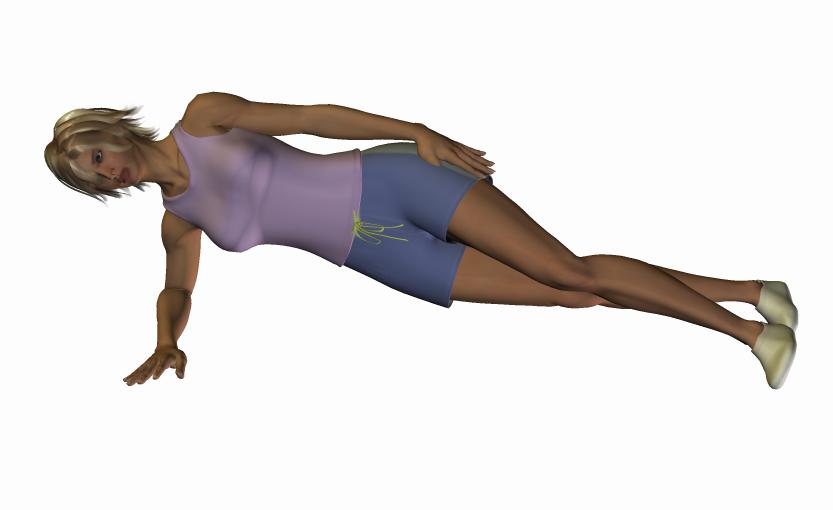by Greg Lehman.
Article copied from: http://www.greglehman.ca/blog/2012/12/26/core-stability-and-pain-time-to-stop-using-this-word-to-explain-pain
April, 2017
Purpose:To cherry pick a few research articles to suggest that even though our knowledge of core stability is very impressive its link to pain is poor.
Nutshell summary: People in pain have spines that function differently than those not in pain. Many treatments can influence pain. The spine stability model of low back pain does not explain how people have pain and takes an overly mechanical view of the pain experience. No test has ever shown that a spine is unstable or how “increasing stability” would lead to a decrease in pain. Thinking that our spines need more stability or control may be the completely wrong path in explaining how people have pain or how our exercises help them. Our treatment “corrections” occur not via one specific “corrective” mechanism (e.g. improving stability) but rather through global non-specific mechanisms that our better explained by our understanding of pain neuroscience. Making the shift from believing that “stability” is the issue with pain can thus free up to choose completely different exercise programs. Exercise and treatment prescription thus become simpler. We have preliminary evidence to support this view with the clinical studies that show benefits with the various exercise conditioning programs that train different schools of thought on stability or the just as effective programs that completely ignore any concepts of stability.
Caveat of Ignorance
The purpose of this post is to question things that we say about exercise, low back pain and of course “spine stability”. This is an informed opinion piece and everything I say can be challenged strongly…that’s why I write it. I am also going to put out some “notions” on how I think exercises can help with pain and function. These are certainly subject to debate and will probably change with time. I have also ended the piece with a general overview of what I do in Part Two.
A BRIEF AND NOT COMPLETE BACKGROUND ON SPINE STABILITY ACROSS TWO HEMISPHERES
Two schools of thought regarding spine stability and low back pain emerged in the 1990s.
The Australians and their inner muscles – Train the local muscles first
The first was based on Bergmark’s classification of muscles into “segmental” stabilizers and others into “global” movers. Segmental stabilizer muscles were often considered to be tonic (constantly on) while the others were phasic (on intermittently to create movement). This idea of muscles having different roles was suggested decades earlier by Janda.
Low back pain was assumed to occur when the segmental stabilizer muscles were inhibited and the global muscles took over. The research supporting this idea came from the great work of Paul Hodges (A nice review of Paul Hodges and Motor control can be seen a Todd Hargroves site bettermovement.org). In early studies, Paul showed that in healthy subjects the transverse abdominis and the multifidus muscle (two local muscles) should fire in a feedforward manner when someone is asked to lift their arm. Lifting the arm is a perturbation to the body and muscles in the trunk and legs must turn on for us to keep our balance (some call this “stability’). Dr. Hodges showed that the “Tranny” and MFD turn on before or within 50 milliseconds of the deltoid muscle. Since the muscles become active before the deltoid we can assume that the brain did some motor planning to prepare the body for the arm raising – muscle activation was NOT a reactive response to the movement of the arm.
With low back pain Dr. Hodges showed that this feedforward (or motor control planning) was delayed in the Tranny and the MFD. And BINGO a whole industry was born and the misapplication of science ran hogwild over common sense. So that’s it. All Paul showed was that in those with pain you got a DELAY in firing. No one showed that the tranny was weak, no one showed that the muscle was turned off and no one involved in the research said that the Tranny was the most important muscle on the planet.
But somehow physiotherapists, chiros and personal trainers started telling everyone to suck in their stomach when they did squats because the muscle was erroneously deemed to be super important for spine stability. This was never what the research suggested and caused fits in the North American Spine researchers who really railed against this simple idea.
The other school of thought – Train general core stability (a brief simple version)
Fortunately, I was innoculated against this because of my MSc with Dr Stu McGill in the late 1990s. Dr. McGill and Dr. Sylvain Grenier were excellent in challenging the supremacy of the Tranny. I view their research as less a repudiation of Paul Hodges’ ideas and more of an attack of the misuse of Paul Hodges’ research. What McGill and his colleagues had always advocated and also modeled with their biological fidelitous spine model was that spine stability (aka the ability of a system to return to its normal position after a perturbation) was most robust when all of the muscles worked together in the trunk – all muscles were important for stability. This was again nothing new and we knew this from other joints. Muscles co-activate, create joint compression and the cost of compression is assumed to be offset by the benefit of stability. This North American model of stability assumes that all muscles of the trunk work together to balance the stability demands of the spine. Hence rehabilitation from low back pain should train all the muscles of the trunk in a manner that creates stability but does not do so at a huge compressive cost or adverse tissue loading cost.
Dr. McGill was a leader and pioneer in this. He was the only one actually evaluating exercises and measuring stability and measuring the compressive/shear loading on the spine to determine which exercises might be “safe”. Dr. McGill was able to classify exercises in to ones which were “safeish” (lower compressive or shear loading on the spine) and others which might have a high compressive penalty but an individual got a good workout (i.e. lots of muscle activity).
The clinical relevance of both the North American and the Australian views are founded on a number of assumptions and unknowns.
What both views assume is that exercise training will make the spine more robust in terms of stability (not more stable, as we know a system is either stable or unstable – you don’t make it more stable) and this will lead to less pain and perhaps decrease your injury risk.
FAULTY RESEARCH EXTRAPOLATIONS TO PEOPLE IN PAIN AND OTHER RANDOM STABILITY ISSUES
Below are a number of points regarding the limitations of the relationship between spine stabiliy and pain
1. We do not know why people have low back pain. We do not know what tissue is actually cranky/irritated, fires off a volley of nociception that may ultimately result in the production of pain in the brain (if it even is coming from some cranky/irritated nerve embedded in tissue and is not wholly a production of pain from the brain in response to some perceived threat). We can not say that a disc is pissed off, a muscle is cranky, a facet joint is upset or if some ligament wants a vacation. Damage in the spine has a poor correlation to pain. So if you can’t identify what tissue is the source of nociception (and we can’t) what is the mechanical basis for the prescription of any stability exercise? How would changing the stability of the spine decrease nociception? If you think spine stability exercises actually change stability parameters by what mechanical means does this change nociception? If you think spine stability exercises help your patients and clients but you can’t explain it via a mechanical explanation (but you know it works) do you think there might be something else going on besides stability issues that you are affecting to influence the perception of pain?
2. Who cares if a muscle is delayed 50 milliseconds? Really, what relevance does this have. The muscle turns on eventually and does its job during a task. Why is a delay of 50 ms relevant in terms of biomechanics. Is this delay a defense or a defect? Is the problem in the spine (unlikely) or more a symptom of “something is up” with the brain (more likely, and this is where Dr. Hodges is doing most of his work now yet in popular clinical culture we are stuck at the level of spine). I will go into Hodges work later in another post because I think his work on motor control and the brain may be extremely relevant. Big point here, Hodges never measured stability. Just muscle activation in all the muscles that make up the trunk cylinder (side note: he did a wonderful job here, I think his research is excellent, he is an excellent researcher and his contributions to our understanding in the area of motor control are without par. I would also prognosticate that his future research might bridge the gap from mechanical views of spine and pain neuroscience). Everyone just jumped on the stability wagon and assumed that it was compromised. Maybe there is something else going on here besides stability.
3. The argument for the motor control camp against bracing and planking – “Don’t brace or do planks because your spine becomes rigid” is a wee bit weak. This is the argument against the North American model of spine stability and is used to justify”motor control” or low level exercise. It suggests that if you do a bunch of planks you will become rigid and activate your muscles too much. I disagree with this puppetry view of the body. Doing planks will not somehow carry over to rigidity in our activities of daily living. We aren’t puppets where we can tighten and loosen the strings of our spine. This is catastrophizing against a therapy rather by the patient. These exercises aren’t that powerful both in a negative or a positive way. However, if you actively brace and assume a rigid posture as a choice during all of your normal activities then you can make this argument. Don’t blame the exercise blame the conscious choice of movement.
4. Do you think your patients are really “unstable”? Patients are in pain. They move differently, you might perceive them to have “tight” muscles. But is their spine really unstable? Is there a vertebrae in there sloshing around, sliding this way and that, pinching on stuff. Is the spine really buckling? We can have patients with high levels of spondylolithesis and their spines are not unstable. I think we might want to reconsider telling our patients that their backs are unstable and they need stability exercises. How much fear do you think this creates? No one has ever shown that a patient with persistent low back pain has funny uncontrolled movements at a segmental level in the spine.
5. But my SI joint needs force closure, I need to train my Tranny or MFD or some bloody fascial sling.
How is your SI joint unstable? What wonky movement do you really think is happening in there? I believe that there is less than 2 degrees of movement and a few millimetres of slide in that SI joint but how is having a delay of 60 milliseconds in one muscle changing this movement? If it does change that movement why does this cause pain? And so what if the joint slides too much. Other joints slide around and they don’t create nociception. And if you have a delay in the tranny won’t the big, bad global muscles be on at the same time and thus increase force closure and shut down the movement.
These global muscles certainly have the architectural requirements to create force closure. None of this makes sense. Oh wait, those global muscles are on too much and that causes too much compression in the joint and that causes pain. Oh, gotcha that makes perfect sense. But guess what, no consistent research actually suggesting that this happens. The studies showing increases show increases that are extremely subtle and again how this would cause pain is never laid out in any logical or supported manner. Well what if that joint is fused? That seems like a lot of compression. Should that not be painful yet its not? And why would compression from muscles be painful? Would someone not be better lying down and not lifting weight, walking, running if compression was so nasty for the SI. More compression on a joint is not necessarily bad and does not lead to pain. There is something else going on here.
6. Is it really that bad to get away from the neutral spine? I agree that a neutral spine is generally stronger when the spine is undergoing maximal compressive and shear loading. Maintaining a neutral spine when deadlifting, doing kettlebell swings, squats and picking up your sofa makes some sense to me. But do I really need to never bend or twist my spine. It has a certain amount of movement built into it. Why would I not use it? Motion is lotion. We would never tell another body part to not move. Taking away movement is how we torture in Guantanomo. The majority of spine pain does not occur because of we have overloaded it to an extent where it reaches the limits of tissue injury capacity. This may be one of those issues where we can confuse injury with pain. Neutral spine bracing can probably help with injury and performance when under high loads but is it necessary to decrease pain in someone getting up from a chair with low back pain? I will grant that sometimes when you brace and move with a neutral spine and get out of a chair you have less pain. In other people it gets worse. Maybe there is something else that explains this besides stability.
7. Patients get better with all types of spine exercise programs.
We have clinical efficacy trials showing that a motor control program (e.g sucking in your belly and then progressing with more global exercises) and a global exercise program helps for low back pain. So do general exercise programs. We know that exercise for the spine can help but perhaps it does not matter which exercises we do. When we get similar results from two different theoretically supported exercise regimes perhaps there is something about the two different programs that is similar. Perhaps it is that similarity that leads to improvements in pain. A recent paper by Mannion et al (2012) championed a similar idea. In other words, we get results but not for the reasons that we think we get results.
8. I think we scare the shit out of people when you tell their spine needs stability
This the default word that many of us tell our clients. “You’re unstable, you can’t “control” your movement and that is why you are in pain”. Its so defeatist and catastrophizing and really has little support. I say we stay away from these words…See my previous post here on this same topic (The words we use can harm)
RECAP
You can rehab a patient using the two different schools of thought on spine stability. You will probably have similar results. Conversely you could just have patients exercise their entire body and they will also show improvements. You will also have good results if you just teach people about pain and give them the confidence to keep moving and not get worried about their “bloody lack of stability” that some therapist told them they once had.
Stability is probably the most inappropriate word we can use to describe our patient’s spines that are in pain. No one has documented that patients in pain have unstable spines nor is there any reliable clinical test for it…yet we have been using this word for twenty years. That is crazy yet so many of us think that we have to “increase the stability of the spine” in those with low back pain. No one has shown how any dysfunctions related to “stability” actually cause pain. Again, crazy. Yet we tell patients they need stability exercises to correct some mysterious bogeyman. When we get results with completely different movements or exercises that totally conflict in terms of spine stability theory this tells me that the reason our treatment is effective probably has nothing to do with stability.
In part two, I will layout how the spine function is different in people in pain and also give some theories on what treatment does to help our patients.
COMENTARIO
Las Disfunciones musculo-esqueléticas, se caracterizan por generar alteraciones en el “Movimiento” del Paciente o usuario, ya sea; porque el mismo movimiento sea la causa del problema (en casos de restricciones, hipomovilidades, inmovilizaciones, patrones capsulares articulares, falta de control dinámico, etc.) o bien, un movimiento inadecuado o patrón “mal adaptativo” que se genera a causa de una lesión. El Usuario compensa o altera los patrones de reclutamiento muscular, los aprende (en corteza cerebral y repite), modificando la activación y por ende, “se mueve diferente” durante las distintas actividades diarias y deportivas, y son éstos patrones dinámicos alterados aprendidos; los que en última instancia, producen cuadros de lesión, síndromes miofasciales y comportamientos de dolor mantenido, que cronifican los síntomas del Paciente-usuario.
Por consiguiente, evaluar el movimiento, en todas sus dimensiones , debería ser una herramienta muy eficaz, no solo para pensar en estabilizar o fortalecer, , sino para cortar los círculos viciosos DOLOR-LESION- DOLOR que caracterizan a las disfunciones crónicas musculo esqueléticas.
Liliana Rozo, Magíster en Terapia Manual











Sigueme en Redes Sociales